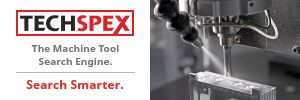
Although the 2013 Honda Accord looks long and sleek, at 191.4-in. long, it is down 3.5 in. from the previous generation Accord, and the 109.3-in. wheelbase is 0.9 in. reduced.

Dave Marek, division director, Automobile Styling, Honda R&D, in the California office, says that this is the “most-sculpted Accord ever made.â€

While most vehicle manufacturers no longer offer coupes in the midsize category, this is not the case with Honda, as it continues to build the Accord Coupe. While the people at Honda like to say that the Accord is a “driver’s car,†the Coupe is really a driver’s car, especially when equipped with a 278-hp six-cylinder engine and a six-speed manual transmission.

Honda has developed a new hybrid system that will be introduced in the Accord in early 2013 in the form of a plug-in hybrid. It uses a 2.0-liter, four-cylinder engine and a two-motor hybrid system. It can operate in three modes: all electric, gasoline-electric, and direct drive. It will be followed in 2014 by a non-plug-in form.
Previous
Next
Related:
Automotive Design
Automotive Engineering
Automotive Production
The Honda Accord has been available in the U.S. market for 36 years. Honda has been manufacturing Accords in its plant in Marysville, Ohio, for 30 years. And in the time that the Accord has been available in the U.S. market, 11-million of the vehicles have been sold. And of that 11-million, 9-million were produced in Marysville.
There aren’t too many nameplates that have had such a long run. There aren’t too many plants that have had that focus.
So when people from Honda talk about the development of the 2013 Accord, the 9th generation, many of the observations are predicated on the importance of the Accord buyers, which may seem like a completely normal thing to say, but then there is a philosophy behind it that goes beyond Marketing 101. Dave Marek, division director, Automobile Styling, Honda R&D (Torrance, CA), explains that the approach to designing vehicles at Honda is encapsulated in the phrase “Man maximum. Machine minimum.â€
Which essentially means that when they developed the 2013 they started with the inside space and then worked outward. The point is to have roominess for the occupants of the vehicle and their stuff and to minimize the amount of space required for the mechanical aspects of the car. Shoji Matsui, the large project leader for the 2013 Accord (meaning he is the individual in charge of the program), who is based in Japan at the Honda R&D Co. Automobile R&D Center, says that the package concept for the car is “Exhilarating Efficient Package,†and echoes the “Man Maximum. Machine Minimum†phrase.
Putting some metrics to that: the car (we’ll use the sedan here, although it is worth noting that there is a new Accord Coupe, as well*) is smaller and lighter than the previous-generation model. Taking an LX trim, it is like this:
                          2013   2012
Wheelbase:   109.3 in.   110.2 in.
Length:          191.4 in.   194.9 in.
Height:             57.7 in.   58.1 in.
Width:              72.8 in.   72.7 in.
Curb weight   3,193 lb.   3,216 lb.
 (manual trans.)  Â
While the overall passenger volume is decreased . . .
                                   2013        2012
Passenger volume:Â Â Â 103.2-ft3Â Â Â 106.0-ft3
. . . key interior dimensions for the comfort particularly of those in the rear seat (the Accord is sold in a number of countries, including China, and that one, in particular, is one where rear seat roominess is important) are generally increased:
                           Â
                            2013              2012
Headroom
 front/rear:   39.1/37.5 in.   39.0/37.2 in.
Legroom
 front/rear:    42.5/38.5 in.   42.5/37.5 in.
Shoulder room
 front/rear:   58.6/56.5 in.   58.2/56.4 in.
Hip room:       55.6/54.7 in.   56.6/54.3 in.
In addition to which, there is more space for stuff:
                           2013      2012
Cargo volume:Â Â Â 15.8-ft3Â Â Â 14.7-ft3
In talking about the sedan, Matsui ticks off some of the elements that make an Accord an Accord, elements that undoubtedly go a long way in explaining the success of the vehicle over the past 36 years. He starts by saying that the “Honda Sedan DNA†consists of things that customers are looking for, as in quality, durability, and reliability, and while QDR may be in the lexicon of the industry, he has a more simple way of explaining what they have worked to achieve: “A product people say that can’t go wrong buying.â€
One interesting aspect of this is that they worked to achieve what can be considered an all-around car. That is, Vicki Poponi, assistant vice president, Product Planning, American Honda, says that “Customers are multidimen-sional,†so while the competitors in the midsize car category tend to focus on a single differentiating factor (e.g., styling, “incremental fuel economy performance improvementâ€), midsize customers “have a laundry list of features†that they’re considering when looking at a vehicle. “Accord,†Poponi says, “may not be #1 in all categories, but it is #1 or #2.†Which goes back to the “can’t go wrong†notion.
While Marek says that the 2013 Accord is the “most sculpted, dynamic, and sporty†of all of the generations, Matsui notes an aspect that puts customers ahead of designers: “Our philosophy is that a vehicle with good visibility is a vehicle with good safety. We think that this is something that you should prioritize when developing a vehicle.â€
So one consequence of this drive for visibility is that the beltline is low. “To make a sedan look cool,†Matsui acknowledges, “designers want to bring up the belt line and bring up the back.†And while he acknowledges that cars with the high, rising beltlines do look cool, visibility was more important for the Accord development. Not that he doesn’t think the Accord doesn’t look cool—especially the coupe—but the requirement for visibility trumped the early designers’ sketches.
Another interesting aspect leading to improved visibility is the use of a narrow A-pillar. A-pillars have tended to become larger in recent time in order to handle vehicle rollover requirements. But for the 2013 Accord, the A-pillar is 4.3-in. wide, compared with 4.4 in. for the 2012 Toyota Camry and 4.8 in. for the 2012 Hyundai Sonata.
Because safety is a particularly important element—Poponi notes that this is a “family sedan†and points out that “40% of midsize buyers have at least one child at homeâ€â€”doing things like having thinner A-pillars without compromising safety has led to the use of the next-generation Advanced Compatibility Engineering (ACE) body structure which utilizes hot-stamped and other high-strength steels to provide a secure cabin structure.
According to Matsui, 44.2% of the body structure is produced with 270 MPa steel while 55.8% is made of high-strength steels, ranging from 440 MPa to 1,500 MPa. Of the steels, 17.2% are 780, 980 and 1500, grades that have not been used on any previous Accords. (An additional benefit of using the higher-strength materials is an overall weight reduction of 57.2 lb.)
The company expects that it will achieve a Top Safety Pick “Plus†rating from the Insurance Institute for Highway Safety.
While on the subject of materials: the car has what Matsui says is the world’s first steel and aluminum bonded front subframe. The steel and aluminum components are joined via friction stir welding, a process that uses a rotating tool under pressure to cause the materials to mix at their boundaries due to the consequent heat generated. This composite subframe, too, provides a weight-save, as it is 13.2 lb. lighter than the one in the 2012 Accord.
What’s under the hood is important. (Marek quips, when discussing how the design had to accommodate the engine, “We are, after all, a motor company,†referencing the name of the corporate entitity: Honda Motor Co.) The Accord includes the first application of the company’s “Earth Dreams†powertrain technology, which is based on improving fuel efficiency of its powertrain.
The base engine is an all-new direct-injected, 2.4-literDOHC i-VTEC four that produces 185 hp and 181 lb-ft of torque, which are 4% and 12% increases, respectively, compared with the engine it replaces. And compared to the previous four, the new engine has a lighter aluminum block, an aluminum head, a resin cam cover, and a more-efficient accessory belt design, which results in an engine weight reduction of 3.5%.
The engine deploys a forged-steel crankshaft with micropolished journals. The cylinder bores are offset by 8.0 mm from the crankshaft which reduces piston-sliding friction (i.e., reduces side loading) and gives the connecting rods a better angle during the power stroke.
The lightweight pistons have dished crowns because this engine features direct-injection, the first application in a Honda vehicle in North America.
The four can be mated to a new six-speed manual transmission (the six-speed available in V6-powered models is a carryover from the previous-generation Accord Coupe) or a continuously variable transmission (CVT). Briefly, unlike a conventional stepped-gear automatic, the CVT features a torque converter that drives two variable-width pulleys that are connected by a steel belt that has angled inner faces such that it can circle the pulley faces at varying diameter, depending on the pulley width, such that the effective ratio between the pulleys is effectively altered. All of which means that there is a nearly infinite range of “gear ratiosâ€â€”but realize that there are no gears per se (although a planetary gearset is used to allow the transmission to shift between forward and reverse). Which means that instead of approximating the correct ratio like a conventional automatic transmission (remember that the gear set for the transmission is what it is), there can be an optimum ratio for improved performance (e.g., compared to the five-speed automatic in the previous-generation car, there is a 10% fuel efficiency contribution from the CVT—and also compared to that automatic, the CVT is more compact, has fewer components, and has a higher torque capacity).
To assure that the CVT allows “spirited’ driving, there are two modes: D for normal driving and S for performance. The latter has more aggressive mappings, such that the engine rpm is kept higher for acceleration and response. What’s more, there is a “G-Design†shift logic that allows the CVT to immediately send power to the drive wheels and adjust the gear ratio (in effect “downshiftingâ€) when the driver gets on the throttle having been driving at a steady speed (e.g., passing). This occurs faster than can be attained by a conventional automatic, which must step down through shifts.
The Accord with the four and CVT combination returns 27 mpg city, 36 mpg highway, and 30 mpg combined.
The Accord is also available with a 3.5-liter V6 that provides 278 hp and 252 lb-ft of torque. This is a revised engine; there is a new cylinder head design and other improvements. When mated to a six-speed automatic it is available with Variable Cylinder Management, which allows the engine to operate on three cylinders. The fuel efficiency of this engine with the automatic is 21/34/25 mpg, city/highway/combined.
The Accord will also be available in early 2013 (as a 2014 model) as a plug-in hybrid (PHEV). This hybrid system is different than the ones that have been used on previous Honda hybrids. It uses a 137-hp, 2.0-liter, four-cylinder Atkinson-cycle engine and a two-motor hybrid drive system. There is a 6.7-kWh lithium-ion battery pack. The total system output is 196 hp. The system operates all electric (up to about 15 miles), combined gasoline-electric, or gas-only. Recharging the battery requires <3 hours on a 120-v outlet and <1 hour with a Level 2 (240-v) charger. Fuel economy ratings as of this time have not been finalized, but it is expected to have a total driving range of >500 miles.
Later in 2013, a non-plug-in hybrid version of the Accord will be launched, as well.
As Poponi puts it: “This is not just a single model. We intend to offer something for everyone.â€
*Accord chief engineer Shoji Matsui admits, “Coupes are a difficult segment.†Especially in the midsize car category, where the Accord competes. The Toyota Solara—a.k.a., the Camry coupe—is no longer in the lineup. And although the 2013 Nissan Altima has been launched as a sedan, it is not clear whether the coupe version will follow. There is no coupe for the Fusion. Malibu. Sonata. Still, Honda keeps producing the Accord Coupe. The coupe is the same width as the sedan (72.8 in.), yet is different in all other dimensions (wheelbase: 107.3 in., length: 189.2 in., height: 56.5 in.). Matsui says particular attention was paid to the interior dimensions, and notably the passenger volume, 95.6-ft3, is an increase of 3.5-ft3 compared with the 2012 Accord Coupe. Matsui admits that there is something personal about this: “I really want my wife to drive this car,†as he explains that having sufficient room inside the car, especially in the rear seat, is critical to that—which is probably the case for many other people. The Coupe is available with more powertrain variants than the sedan: there are the 2.4-liter 185-hp four with either a CVT or a six-speed manual; the 3.5-liter 278-hp six with Variable Cylinder Management (VCM) and a six-speed automatic; and the 3.5-liter without VCM and a six-speed manual.








